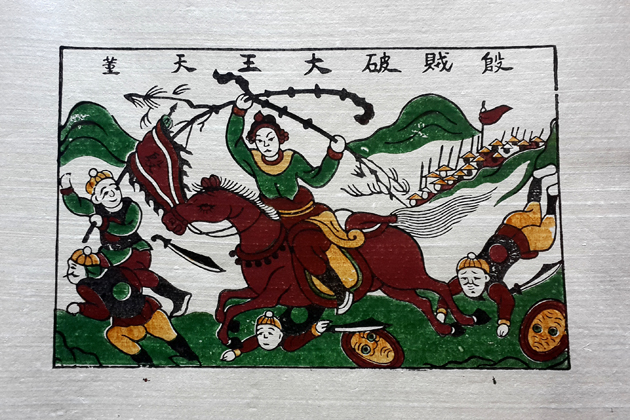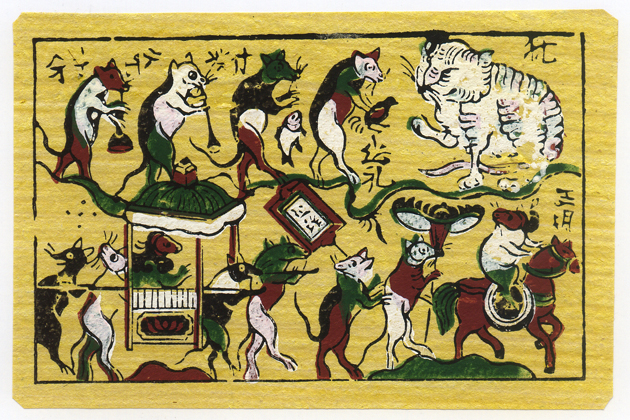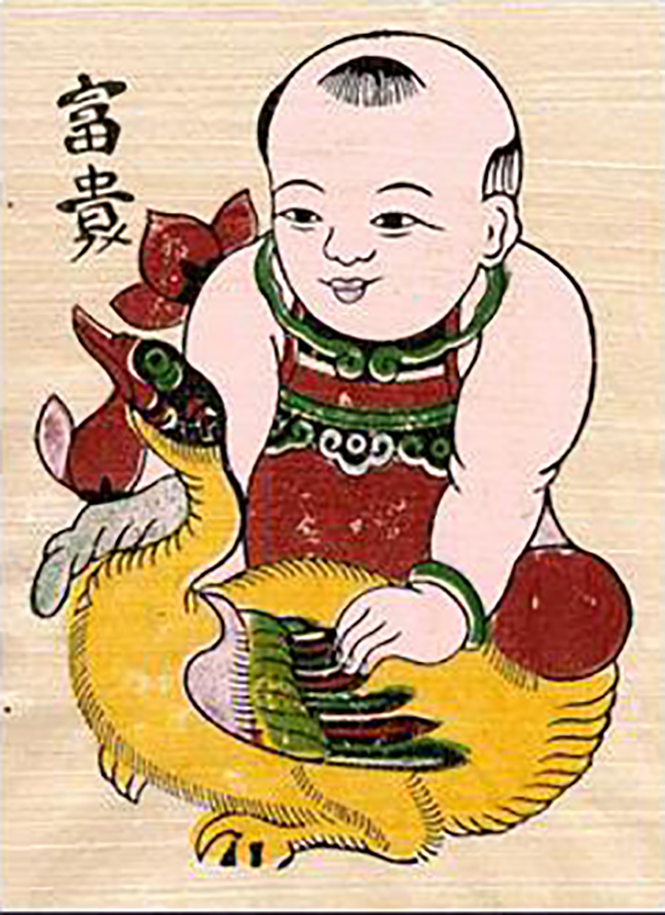Dong Ho painting is the exclusive product of the Dong Ho village, a craft village located on the left bank of the Duong River in Bac Ninh Province, about 35 km from Hanoi. Craftsmen in the village often produce their own raw materials for the making such as “điệp” paper mixed with many natural colours.
Many foreign visitors coming to Vietnam always spellbound the special way of making these intriguing painting in Dong Ho painting village – Bac Ninh Province.
Folk painting is one of the special cultural features of Viet Nam. Since the ancient time, there have been a lot of painting villages, such as Dong Ho village (Bac Ninh Province), Hang Trong (Ha Noi), Nam Hoanh village (Nghe An Province), Sinh village (Hue city), and other villages in the south and mountainous areas.
Dong Ho painting are printed by hand on the surface of wooden plate. Each printing color has its own engraved board. The black one is printed last. Thanks to this way, paintings are made in bulk and do not require sophisticated techniques.
Dong Ho paintings mainly reflect the aspiration for a peaceful, happy and prosperous life. Dear animals in people’s life, such as cow, pig, dog, cat and chicken are also depicted in a lot of paintings. Especially, some paintings like “catching coconuts”, “mice wedding” and “jealously” attract the attention of many domestic and foreign visitors.
The painting fair is annually held on Tet holiday in the communal house in Dong Ho village, which draws a large number of tourists. From the afternoon of March 14th (lunar calendar), shoddy goods competition is also held at the same place. Painting fair is a distinctive cultural feature of Dong Ho villagers.
Dong Ho Painting “Mice wedding”
The printing paper is made from the bark of tree. The background paper is originally white. People use natural materials to change the colors of the paper which are usually orange, pink, yellow, purple, etc. colors of the paintings are refined from various kinds of tree leaves that can be easily found in Viet Nam.
Step 1: Prepare the Do paper
Particularly, the red color is taken from earth of hills and mountains; the black color is from the coal of burned bamboo's leaves; the glitter white color is made of sea shells. The original point of Dong Ho folk painting is the durability of colors. The painting is finally covered with a layer of sticky rice paste to protect the paintings and their colors. They are so long lasting that it is very difficult to make them dimmer due to time or light.
Step 2: Coloring
Step 3: Wood molds engraving
The most common idea carries congratulation meanings, for instance, “Honor-Prosperity”, “Spring Ritual”, “Chicken Family”. Another plot is daily activities, which include “Jealously”, “Playing flute”, “Farmer and Water Buffalo”. Those paintings with Chinese characters have clearer meanings. For example, the painting “Justice” that portraits a child carrying a frog, it usually means humanity and justice.
The last step: Picture printing
Traditionally, Dong Ho painting was an essential element in every Vietnamese family during the Tet Holiday. The colorful tones and optimistic content of the images livened up the house and the picture was considered a good luck sign for the family in the New Year, thus Dong Ho paintings had other names like Tet paintings (tranh Tết) or Spring paintings (tranh Xuân). Before 1945, there were over 150 families in Dong Ho village making pictures. However, the tradition fades rapidly under the dominance of modern life in Vietnam and Dong Ho pictures gradually disappear in Vietnamese families during the Tet holiday. The principal buyers of Dong Ho paintings today are tourists who are interested in traditional arts. Therefore, the villagers can no longer make a living based on this production. Dong Ho painting also has to face the menace from fake pictures which are mass-produced by printing machines. As a result, there are currently only several households in the village that still make Dong Ho pictures while many others have switched to producing joss paper and votive paper objects (vàng mã).
Meaning of pictures
Remember to come to Dong Ho on Tet holiday to mingle yourselves in the atmosphere of a painting fair, which is an opportunity to choose one to your taste.




























